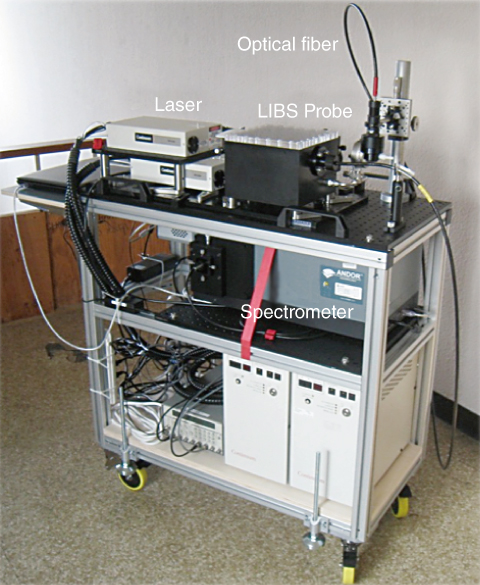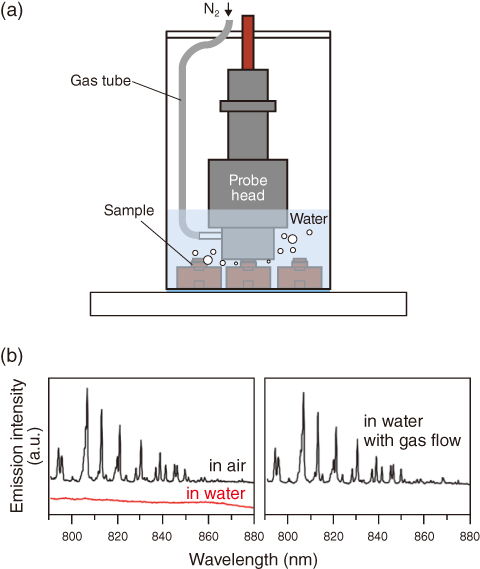
Fig.1-25 Prototype of the transportable LIBS apparatus

Fig.1-26 Typical experimental set-up and results
To decommission the TEPCO’s Fukushima Daiichi NPS (1F), environmental information is needed about the inside of the post-accident reactor core. In 1F, molten fuel debris (a mixture of melted fuel core material, fuel cladding, and construction material) might be submerged in water inside the reactor core. There is not enough space for the direct inspection of the reactor core, because many pipes for water and electricity occupy the inside. Moreover, a high radiation field hinders people’s access. Thus, a remote sensing technique that is applicable in narrow spaces is crucial for the inspection of 1F.
For this purpose, we have proposed a combination of a fiber optic transmission system and laser-induced breakdown spectroscopy (LIBS), which is an analysis technique that comprises ablating a material with a focused laser beam and detecting emission from the ablation plasma. A prototype of the transportable LIBS apparatus is shown in Fig.1-25. Among the most pivotal parts was the fiber optics, which needed to have high resistivity against radiation. To test the radiation resistivity, the fiber optics employed in our apparatus were exposed to 60Co γ-rays with a total dose of 1.6 MGy in the Takasaki Institute. Comparing the optical conditions before and after the radiation exposure, we confirmed that the transmissivity of the fiber optics in the infrared region (730-1100 nm) was not degraded by the irradiation, and thus, infrared can be used for the laser and the emission transmission.
In addition to radiation resistivity, the LIBS analysis of underwater debris demands a special technique, since water quickly quenches the plasma emission that is induced by laser ablation. Hence, we attached a gas-flow system to the head of the LIBS probe and performed the LIBS analysis under a quasi-atmospheric environment in water (Fig.1-26(a)). Fig.1-26(b) is the emission spectrum of zircaloy in water using the gas flow system.
Towards in situ observation and analysis of the debris, we are improving the system that comprises our LIBS apparatus combined with radiation measurement and image detection through optical fibers.